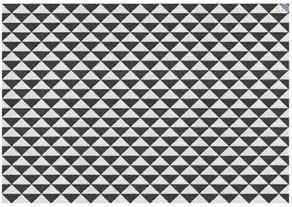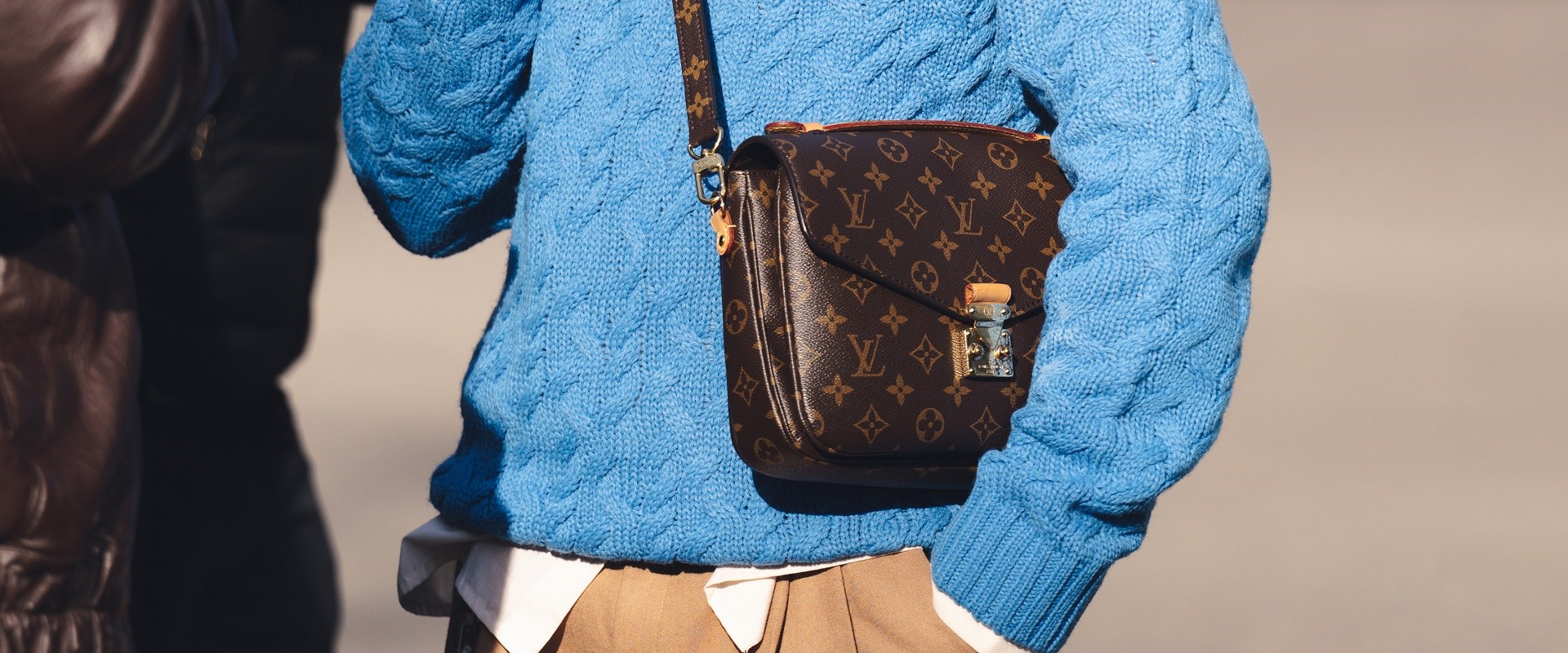Some luxury fashion houses have their own signature patterns: The Burberry check, Louis Vuitton Damier Azur and Prada Symbole being the most famous examples. These are notably printed across luggage and accessories with the print as the main feature. On clothing, the pattern is usually applied more subtly, such as on the lining of a jacket, across the collar, or as even more discreet features, such as on the hem.
Leading fashion houses, such as Louis Vuitton Malletier (LV), Burberry, and Prada, have adopted relatively simple patterns as their house print. These prints are often applied in varying colourways across their core iconic products. Despite their longstanding and widespread use, these brands have struggled to register their prints as trade marks.
Luxury French fashion house LV, founded in 1854 by Louis Vuitton, has used its “Damier Azur” pattern since the early 2000s. The Damier Azur, partly translated to “checkerboard” in French, is a simple checkerboard pattern, available in a two-tone chocolate brown or beige-grey combination. The Damier Azur is famously used on many of LV’s luggage and accessories, notably bags and purses. Despite LV’s widespread use of the Damier Azur, which has famously come to be associated with LV worldwide, it has been unsuccessful in registering it as a trade mark. The EUIPO rejected the trade mark on the basis that it had not acquired distinctiveness in the print, which is a requirement for non-traditional trade mark registration. In part, this conclusion is not surprising, due to the somewhat generic checkerboard print. However, it is unclear what more LV could do to gain registration for this print, which appears on one of the most highly counterfeited fashion products (LV handbags) in the world.
British fashion house Burberry, founded in 1856 by Thomas Burberry, is renowned for its signature “Burberry check” pattern. The Burberry check has been used across Burberry’s fashion items since the early 1900s. Most notably, the check has been applied as a blanket print across Burberry scarves and is famously lined on the inside lining and collar of the iconic Burberry Trench coat. Burberry owns a trade mark for its check mark in the red, camel, black, and white colourway. Despite this, more recently, the EUIPO has refused Burberry’s application for a variation of its check mark.
The latest in this line of “pattern” mark cases concerns the luxury Italian fashion house, Prada. Prada, founded in 1913 by Italian designer Mario Prada, is well-known for its iconic “triangle” symbol, the Prada Symbole. Prada’s “PRADA MILANO” sign is often featured on its products, usually displayed in the center of the Prada Symbole. Indeed, Prada has a trade mark for its standalone Prada Symbole mark containing this wording.
However, Prada also uses the Prada Symbole as a pattern, as depicted below, which it sought to register as a trade mark.

The EUIPO refused Prada’s registration on the basis that it was not sufficiently distinctive. This is perhaps unsurprising; in essence, this is a somewhat generic, monochrome geometric pattern. The EUIPO observed that the pattern is “a basic and commonplace figurative pattern”, lacking any particular departure from what is usually found in relation to such patterns.
As this line of cases demonstrates, pattern marks can be difficult to register as a trade mark. Each of these brands failed to prove that their pattern mark is distinctive enough to meet the criteria for registration in the EU. This is not particularly surprising. Taken at face value, the prints are not in and of themselves distinct patterns and are comprised of somewhat generic, geometric shapes.
Conversely, it is unclear what more these brands could have done in order to gain the required distinctiveness. The Damier Azur, Prada Symbole, and Burberry check have been consistently used for decades around the world and are inherent to these luxury brands.
For fashion brands looking to register patterns as trade marks, marketing teams should co-ordinate with their in-house legal teams to consider creative ways to demonstrate that the pattern creates more than just recognition in the relevant public, but rather that the pattern mark indicates brand origin.






